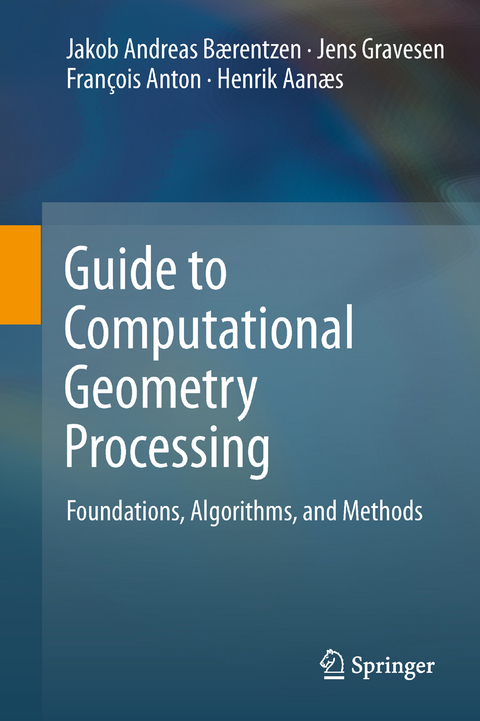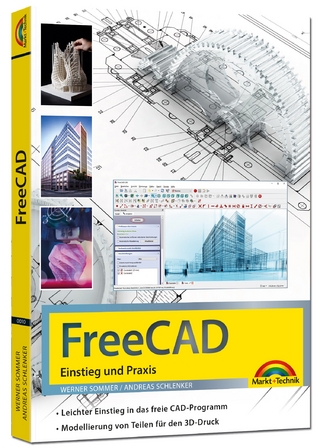
Guide to Computational Geometry Processing
Springer London Ltd (Verlag)
978-1-4471-4074-0 (ISBN)
This book reviews the algorithms for processing geometric data, with a practical focus on important techniques not covered by traditional courses on computer vision and computer graphics. Features: presents an overview of the underlying mathematical theory, covering vector spaces, metric space, affine spaces, differential geometry, and finite difference methods for derivatives and differential equations; reviews geometry representations, including polygonal meshes, splines, and subdivision surfaces; examines techniques for computing curvature from polygonal meshes; describes algorithms for mesh smoothing, mesh parametrization, and mesh optimization and simplification; discusses point location databases and convex hulls of point sets; investigates the reconstruction of triangle meshes from point clouds, including methods for registration of point clouds and surface reconstruction; provides additional material at a supplementary website; includes self-study exercises throughout the text.
Part I: Mathematical Preliminaries.- Vector Spaces, Affine Spaces, and Metric Spaces.- Differential Geometry.- Finite Difference Methods for Partial Differential Equations.- Part II: Computational Geometry Processing.- Polygonal Meshes.- Splines.- Subdivision.- Curvature in Triangle Meshes.- Mesh Smoothing and Variational Subdivision.- Parametrization of Meshes.- Simplifying and Optimizing Triangle Meshes.- Spatial Data Indexing and Point Location.- Convex Hulls.- Triangle Mesh Generation: Delaunay Triangulation.- 3D Surface Registration via Iterative Closest Point (ICP).- Surface Reconstruction using Radial Basis Functions.- Volumetric Methods for Surface Reconstruction and Manipulation.- Isosurface Polygonization.
From the book reviews:“The book consists of two parts—Mathematical Preliminaries and Computational Geometry Processing. Almost 70 pages of linear algebra, differential geometry and finite difference methods comprise all the necessary concepts for the rest of the book. … the book fills a gap in the market for textbook-like publications on geometry processing topics. It could be a valuable source of initial ideas for people trying to extend their basic knowledge in the area.” (Pavel Chalmovianský, Mathematical Reviews, November, 2014)“The book is brilliant in that it maintains a sane balance between theory and practice. It is written by practitioners, for practitioners--the authors are experienced programmers who have developed the geometry and linear algebra (GEL) library, which is being used in real-world applications--without losses in mathematical rigor or theoretical details. This elegant style enables both students and professionals to use it as a reference guide for fundamental topics in geometry processing. … The book is a handy companion for students and practitioners working in computer graphics and computer vision fields, but will also appeal to people working in any computational science and engineering field.” (Alin Anton, Computing Reviews, January, 2013)“It focuses on the important techniques not covered by traditional courses on computer vision and computer graphics. … The book is presented in an accessible fashion full of images, examples, pseudocodes and exercises. … The book is suitable for professionals or graduate students who want to understand the theory and implement algorithms of geometry processing. It can be used for a self studing and as a course book as well.” (Agnieszka Lisowska, Zentralblatt MATH, Vol. 1252, 2012)
| Zusatzinfo | XVIII, 326 p. |
|---|---|
| Verlagsort | England |
| Sprache | englisch |
| Maße | 155 x 235 mm |
| Themenwelt | Informatik ► Grafik / Design ► Digitale Bildverarbeitung |
| Mathematik / Informatik ► Informatik ► Software Entwicklung | |
| Informatik ► Theorie / Studium ► Künstliche Intelligenz / Robotik | |
| Informatik ► Weitere Themen ► CAD-Programme | |
| Mathematik / Informatik ► Mathematik ► Angewandte Mathematik | |
| ISBN-10 | 1-4471-4074-5 / 1447140745 |
| ISBN-13 | 978-1-4471-4074-0 / 9781447140740 |
| Zustand | Neuware |
| Informationen gemäß Produktsicherheitsverordnung (GPSR) | |
| Haben Sie eine Frage zum Produkt? |
aus dem Bereich


